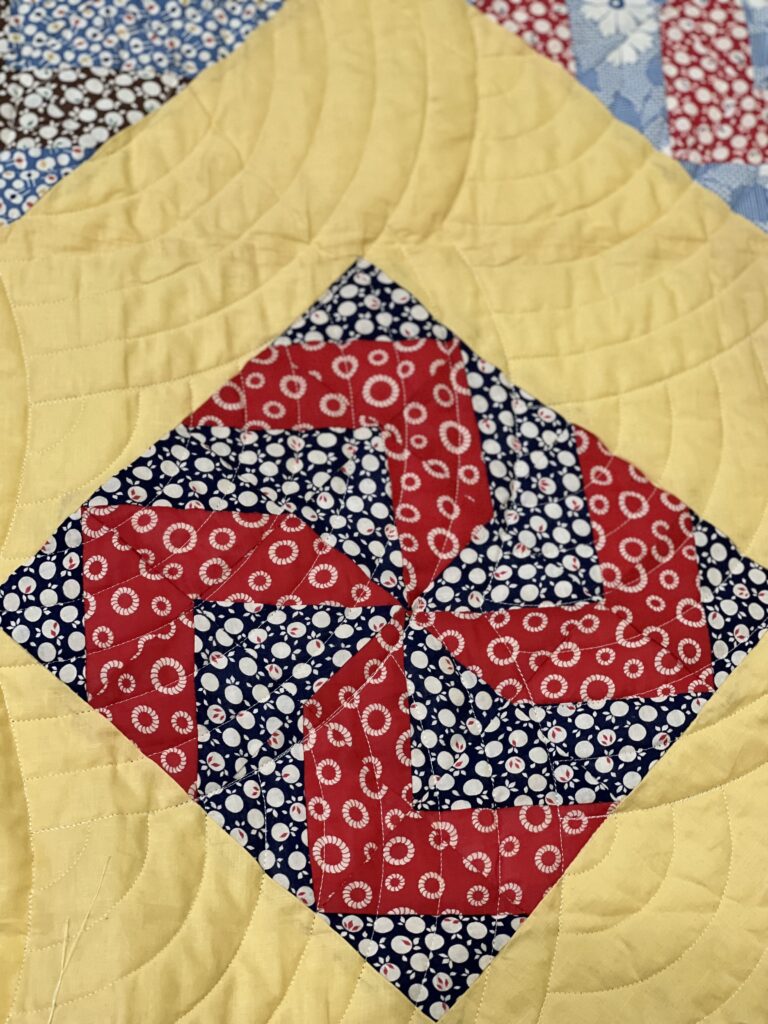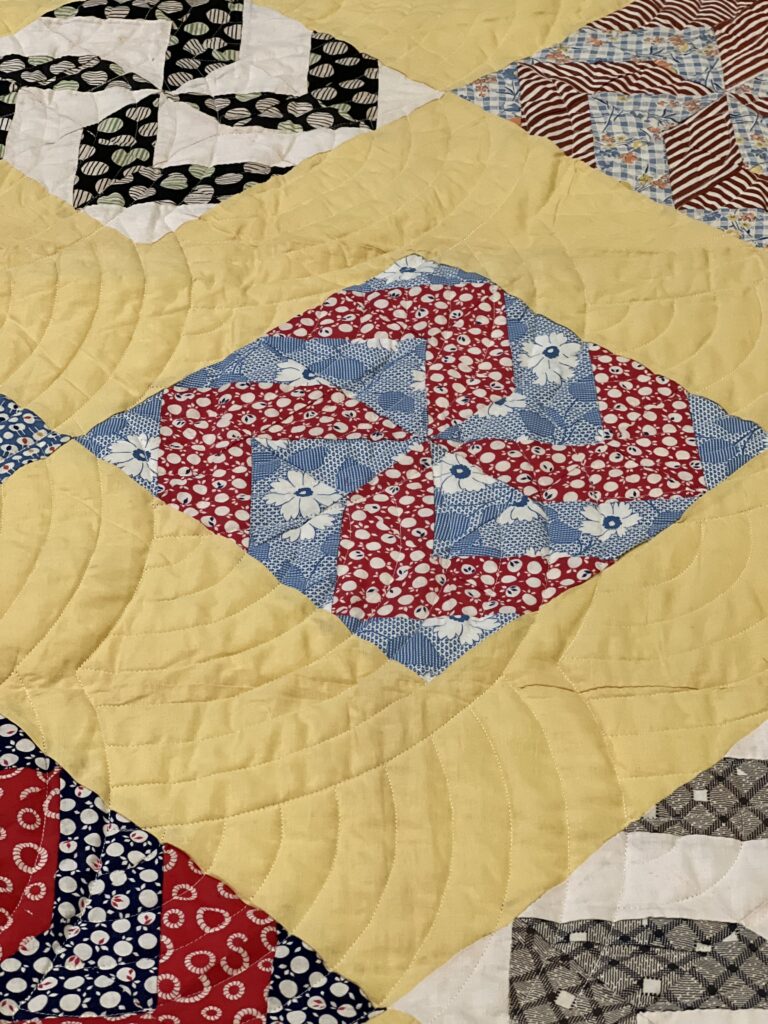Before You Quilt an Antique Quilt Top

Each time I see an antique quilt, I am filled with that longing for days gone by. I think of the person who spent her time hand-piecing the blocks, sashing and borders. This was usually done at the end of a long day of work and not in the best lighting conditions. Yet these quilts have a beauty that is hard to duplicate.
Over the years I have had the privilege of machine quilting many of theses beautiful quilts. Some were in great condition others not so good. Here are a few things to keep in mind when preparing an antique quilt top for machine quilting:
1. Never wash the quilt before it is quilted, even if there are obvious stains. Some of the stitches can be loose and unsecured which can cause the quilt to come undone if washed before quilted.
2. Always make any necessary repairs to the quilt before machine quilting. Unstitched or open seams should be stitched closed using 100% cotton thread. If there are squares or shapes with holes from wear and tear now is the time to replace those. There are many reproduction fabrics on the market today that will blend nicely with antique fabrics for an old fashioned look. Note: If you believe your antique quilt has historic value, please take it to a professional quilt appraiser before doing any repairs. Repairing this type of quilt may cause a decrease in it’s value.
3. Check for any old pins or needles that could have been left in the quilt.
When machine quilting the quilt, use a good quality cotton thread (I prefer Aurifil 50 wt) and choose a design that will help secure the seams as you machine quilt over them. The pattern on the quilt pictured above is most often referred to as the Baptist Fan. It gives the quilt good, secure coverage and is appropriate to the time period that the quilt was made.
If you want the quilt to have that old fashioned “crinkled” look after it is washed use a 100% cotton batting like Warm and Natural. Once the quilt is machine quilted and the binding is complete, it can be washed. There are many products on the market to spot treat small stains. I use a paste made from Borax powdered detergent and water to spot treat before washing the whole quilt top. Wash your quilt by filling the washing machine to the water level needed to cover the quilt. Let it soak for about 30 minutes. Turn to the spin cycle to remove all the water and repeat the process once. Never use agitation. You can spread the top out on a blanket to dry but I tumble dry mine on low/air cycle (no high heat). I decided to leave the blood stain on the block picture below. The quilt was made by my great-grand mother, so it was a part of her that I wanted to leave in place,
I had the privilege of quilting the beautiful antique Sunbonnet Sue quilt pictured below recently. There were several age spots and some random dirty places that I noticed while I was doing the longarm machine quilting. Once the quilting and binding were complete the owner gave it a few spot treatments before a good wash. Isn’t it beautiful and bright now?
I would really enjoy seeing pictures of of your antique quilts and hearing how you deal with spots and stains. Leave me a comment below or send me an email.



